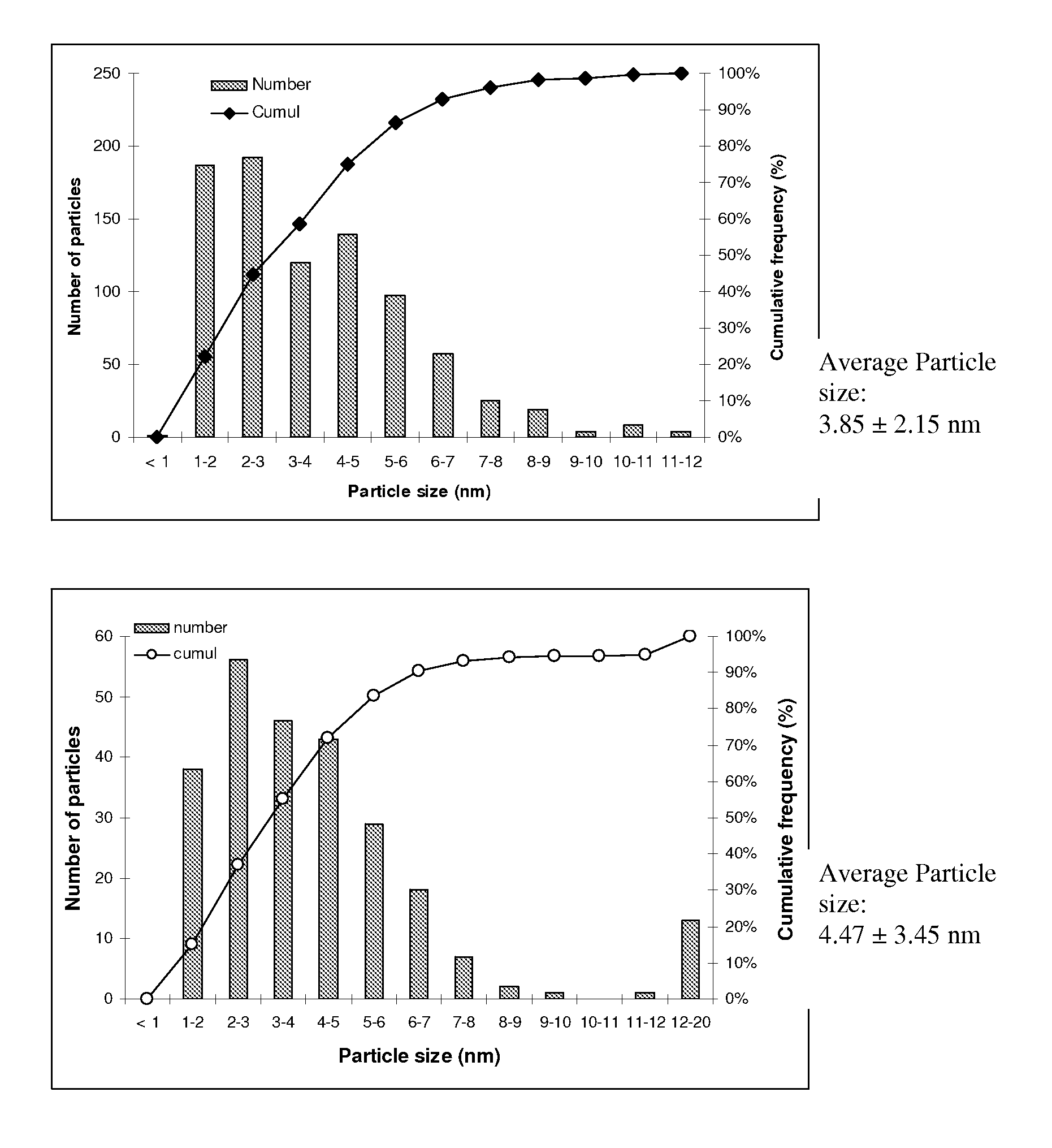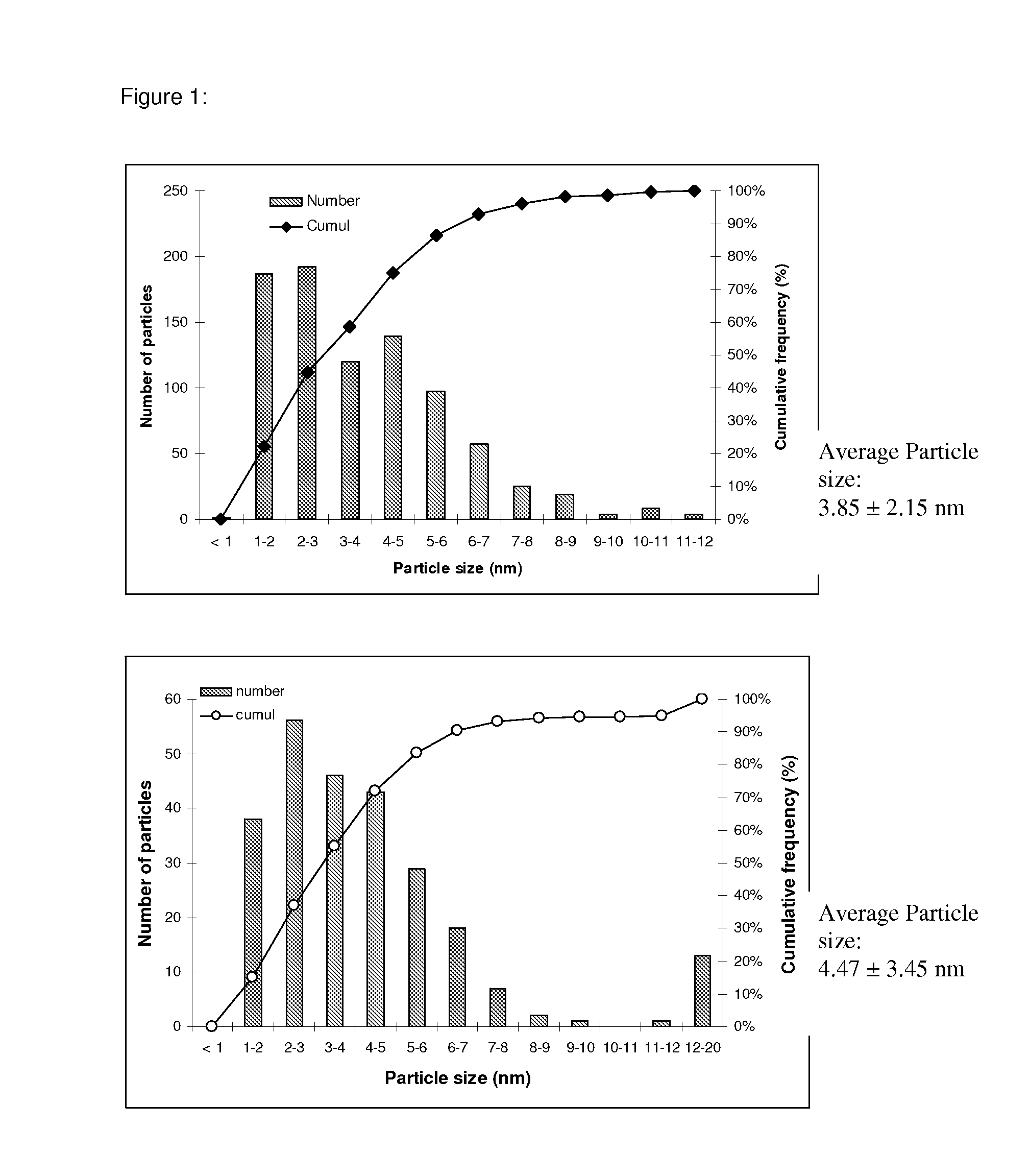Silver nanoparticles with specific surface area and a method for producing them
- Summary
- Abstract
- Description
- Claims
- Application Information
AI Technical Summary
Benefits of technology
Problems solved by technology
Method used
Image
Examples
Embodiment Construction
[0019]In contrast to the known products, the silver nanoparticles of the present invention or produced by the present process unexpectedly have an increased antimicrobial reactivity, good dispersive behavior and a limited size distribution, and can be produced in high concentrations without the need for stabilizing polymers or potentially harmful organic molecules. This allows for a cost-effective production method, in which even the waste stream has added value.
[0020]In the present invention, a production process for silver nanoparticles is given, wherein the main component is a preferably post-treated biocomponent (e.g. a Lactobacillus fermentum strain G2 / 10), grown under specific conditions of a high C / N ratio. The silver nanoparticles of the present invention are not distributed randomly over the bacterial cell volume, but can be found in specific parts of the cell with different yet well-defined particle size ranges. With the current invention, well-defined particle size ranges...
PUM
| Property | Measurement | Unit |
|---|---|---|
| Temperature | aaaaa | aaaaa |
| Temperature | aaaaa | aaaaa |
| Temperature | aaaaa | aaaaa |
Abstract
Description
Claims
Application Information
 Login to View More
Login to View More - Generate Ideas
- Intellectual Property
- Life Sciences
- Materials
- Tech Scout
- Unparalleled Data Quality
- Higher Quality Content
- 60% Fewer Hallucinations
Browse by: Latest US Patents, China's latest patents, Technical Efficacy Thesaurus, Application Domain, Technology Topic, Popular Technical Reports.
© 2025 PatSnap. All rights reserved.Legal|Privacy policy|Modern Slavery Act Transparency Statement|Sitemap|About US| Contact US: help@patsnap.com



